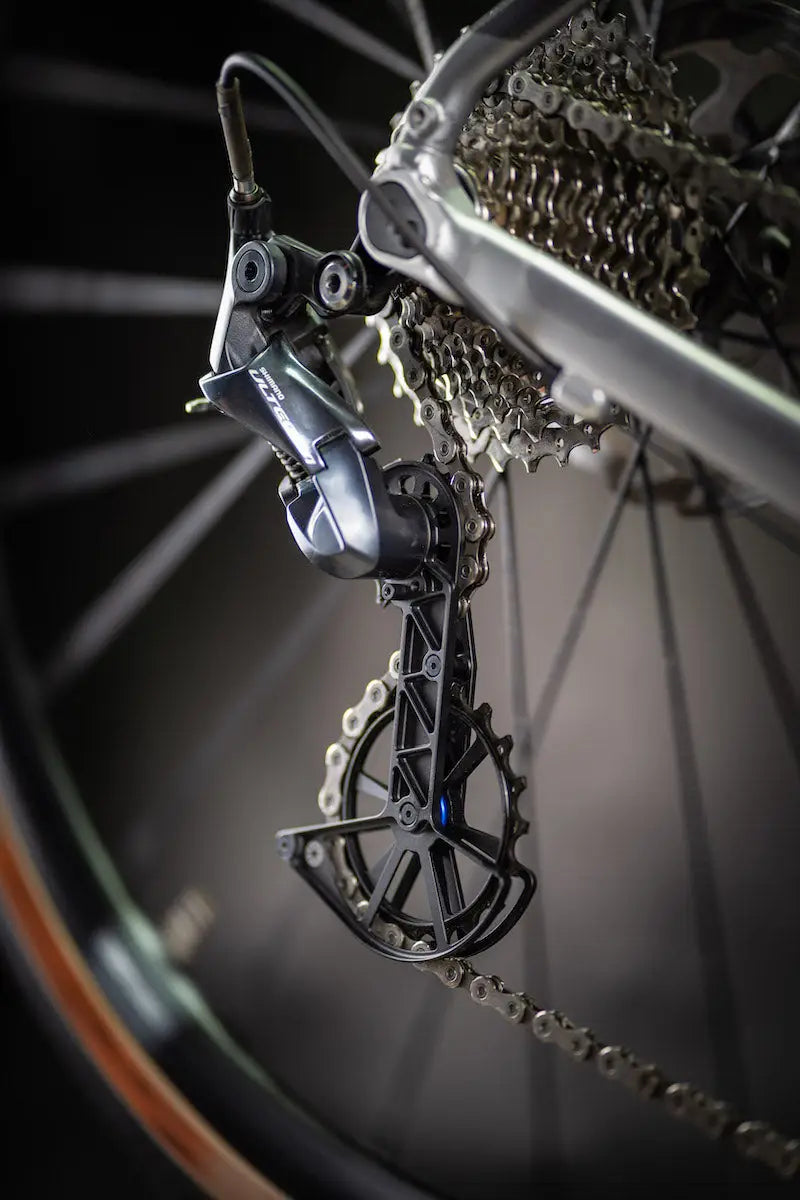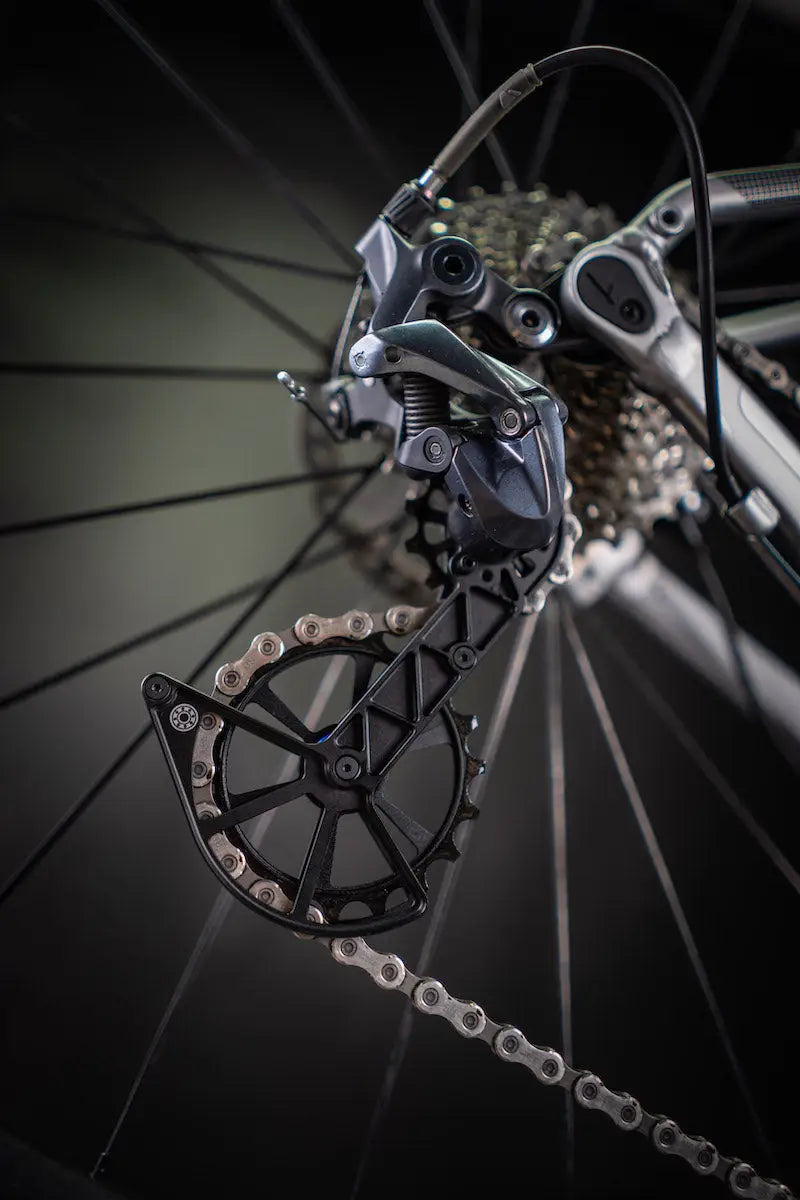Kolossos was designed to not discriminate between road, triathlon and gravel bikes. While oversized pulley cages are a given in tri and common in road, they are a rare sight in gravel races.
 I have a vivid memory of the Belgian Waffle Ride a few years ago. The ride started with a 10 mile warm-up on the road and hit a sharp left turn into a gravel trail. Not even a mile into the gravel, I see one of my fellow competitors backtracking: shouldered bike, $500 worth of shiny blue pulleys and exploded carbon dangling from his chain. Obviously this oversized system was not happy to be off the pavement.
I have a vivid memory of the Belgian Waffle Ride a few years ago. The ride started with a 10 mile warm-up on the road and hit a sharp left turn into a gravel trail. Not even a mile into the gravel, I see one of my fellow competitors backtracking: shouldered bike, $500 worth of shiny blue pulleys and exploded carbon dangling from his chain. Obviously this oversized system was not happy to be off the pavement.
One could argue that there is no point in saving a few watts on a gravel bike since they are heavy and run on big tires already. I think a few watts saved times many hours on the bike make a big difference in your legs during the last 20 minutes.
Let's analyze how Oversized derailleur cages can support your gravel ride and what is needed to make them good:
Long adventure rides
The whole idea behind gravel riding is to get away from it all. Long rides into the back country and being self sufficient. After spending all day in the saddle, the last hour can be tough. Wouldn't it be nice if you saved a couple of watts during the earlier parts of the day and finish your ride while still smiling? In racer terms, this reads as: those few watts saved during the day will make you stronger on the finish straight. Pick your favorite.
Derailleur cage stiffness and upper pulley diameter
Too much flex or using a super oversized upper pulley make for spongy shifting (as i detailed in this 2017 post. Who would've thought we would ever release Kolossos?).
Add a rough riding surface, your chain bouncing in all directions and a cage with the stiffness of a wet noodle. You can see how there is a potential for ghost shifting, skipping cogs and in the worst case: your derailleur grabbing on to a spoke when using the largest sprocket.
Remember that during cross chaining, a flexible cage does not just bend and stay in that position. Under constantly changing loads, it will flex back and forth like a car antenna in the wind.
1x drivetrains and clutch derailleurs
 Many gravel riders opt to run a single front chain ring with a large range cassette. A setup made popular by Sram's mountain bike group sets. The simplicity and weight savings are attractive. In order to keep the chain from bouncing off the front chain ring, these systems rely on clutch derailleurs and high chain tension.
Many gravel riders opt to run a single front chain ring with a large range cassette. A setup made popular by Sram's mountain bike group sets. The simplicity and weight savings are attractive. In order to keep the chain from bouncing off the front chain ring, these systems rely on clutch derailleurs and high chain tension.
Clutch derailleurs and high chain tension add friction. Enough to feel it in your legs or while spinning pedals in the work stand. An oversized pulley system will offset some of that added friction.
Muddy gravel rides
One thing to consider is that all Kolossos cages are built with our road seals for lowest friction. Road seals work well in dry conditions. Our bearing covers are built with labyrinth construction to offer a first line of defense against dust.
When you see other companies offering oversized cage systems for off road use, ask yourself if they have done anything to make the actual bearings suitable for off road use. A ball bearing for a 70.3 on a dry day requires different protection than a bearing used in a wet edition of Dirty Kanza.
If your rides take you on wet trails, it is easy to rebuild the pulleys with cross seals. A basic operation that only requires a seal kit, a scalpel or a pick and a 2mm allen wrench. The seals are cheap, keep some in your tool box, just in case.
Kolossos does not discriminate
Any of the Kogel Oversized Derailleur Cages are built to feel equally at home in a time trial, a road race or a gravel ride. We are here to make your rides more enjoyable, not to restrict your adventures.

